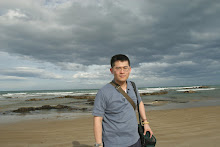I often pass through Lake Boga on my monthly journeys to Swan Hill. The town’s name, often misheard as “Lake Bogan,” belies its gentle charm — a small holiday township set beside a broad, tranquil lake where families gather for boating and water-skiing.
The lake itself, though now a haven for leisure, bears a deeper history. For countless generations it was home to the Wemba-Wemba people, whose connection to its waters long preceded European arrival. Major Thomas Mitchell recorded the lake in 1836, noting the Aboriginal encampments that dotted its shores. A brief Moravian mission followed in the 1850s, an early but short-lived attempt at settlement. With the coming of the railway in 1890, the township flourished as an agricultural district, its fields and dairies nourished by the lake’s waters.
During the Second World War, Lake Boga gained national significance as a secret Royal Australian Air Force base, where Catalina flying boats were repaired and maintained — a vital, if understated, contribution to Australia’s war effort. This proud history now finds renewed expression in a striking new mural by Tim Bowtell, painted upon the town’s grain silos. His work portrays the Catalina aircraft and its commanding officer, George “Scotty” Allan, bathed in the golden light of a Mallee sunset.
Thus Lake Boga endures — a place where the quiet rhythm of rural life mingles with echoes of ancient habitation and wartime service, its still waters mirroring both the passage of history and the enduring artistry of those who call it home.
Sony A7RV
FE 20-70mm f4 G
Linking Mural Monday



...silos make fabulous canvases for murals!
ReplyDeleteThey also stand out in rural regions
DeleteUn buen aprovechamiento de los silos, convirtiéndolos en obras de arte. Y una interesante historia.
ReplyDeleteThe town has no bars or restaurants to stop by
DeleteUnderstated is correct. I am somewhat familiar with Swan Hill, but Lake Boga and its WW2 air force base remained a secret bit of history till now. The silo mural may change all of that!
ReplyDeleteDefinitely very flat around there
DeleteThat's an impressive one. I love the colors.
ReplyDeleteFreshly painted
DeleteWhat a beautiful mural. The Catalina flying boats were serious World War II combat planes. They were not fast or flashy, but they were perfect for anti-submarine defense, observation, and for rescuing downed pilots as they could land and take off from the sea.
ReplyDeleteYou know so much!
DeleteImpressive.
ReplyDeleteQuite sheltered away in the town
DeleteWhat striking murals, very nice!
ReplyDeleteA nice day for the click
DeleteYou have shown well-decorated grain bins before, but they were probably in a different place. It might be an Aussie thing.
ReplyDeleteIt is a wonderful mural!! I hope the indigenous people were not displaced and were allowed to stay there in peace.
ReplyDeleteIt's always good to see painted silos. I did not know about Lake Boga's wartime history. Very interesting.
ReplyDeleteInteresting history. I love the colorful mural.
ReplyDeleteVery good to see this one.
ReplyDeleteTruly amazing mural works, Great pic.
ReplyDeleteSo pretty, there are many wonderful silo murals around Australia. Can't wait to see them! Thanks for participating in Monday Murals. I'll enter your link, apologies for my mistake putting wrong date in.
ReplyDeleteI'm glad they remember--- and I am always impressed by the Silo Art I see in posts! This is excellent!
ReplyDeleteCool art.
ReplyDeleteAnother interesting place. And a beautiful mural as well.
ReplyDeleteAwesome mural! Take care, have a great week ahead.
ReplyDeleteVery good place to be brightened up by significant murals!
ReplyDeleteYou put it well, but the murals are indeed beautiful.
ReplyDeleteEn esta ocasión sirvieron de lienzo para contar uno de los secretos mejor guardados del ejercito australiano de los últimos cien años.
ReplyDeleteSaludos.
Looks good :-D
ReplyDeleteBeautiful murals
ReplyDeleteWonderful.
ReplyDeletewonderful mural photo ~ thanks,
ReplyDeletean artist reflects
Wow. Really well done. I'd love to see this in person.
ReplyDeleteThank you for joining the Awww Mondays Blog Hop.
Have a fabulous Awww Monday and week. ☺
I love all the work on Silos! Such a great idea. #MuralMondays
ReplyDelete